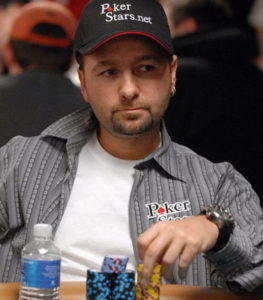
Bluffing in poker divides opinion. For some, poker is all about the art of the bluff and agree that there isn’t anything more satisfying than a successful bluff. For others, more conservative players, bluffing means taking unnecessary risks.
While it is true that some players bluff far too much, there are also a lot of poker players who don’t bluff enough. And on occasions these bluffs are nothing of the kind.
The truth about bluffing is that if you don’t use it as a tactic you need to have the strongest hand in order to win the pot. However, making strong hands in a game of No Limit Hold’em isn’t easy and most hands miss the flop, while a very strong hand pre flop can be made extremely weak by the river.
This is why bluffing is such an integral part of poker. Assuming your opponents are paying attention, the game would be unbeatable if you never bluff. These opponents will not be wasting any time in exploiting a playing style that relies far too heavily on making strong hands.
This then raises the question of not should we be bluffing but how much we should bluff.
When Should We Bluff

One general bluffing rule is to bluff earlier on in the hand and less so on the later streets. The reason for this rule is that, in terms of equity versus a rival’s calling range, your bluffing range will be at its strongest before the flop, and that equity weakens as the hand moves on.
For example, consider that suited connectors will have around 30% – 40% equity pre flop against most of the hands your opponent will play on with. Because of this, you are able to play more of these weaker hands in relation to the amount of strong hands that you would normally raise for value.
But as you get nearer to the river your bluffing range will have less and less equity against your opponent’s hands, so it makes more sense to bluff with them less on later streets. If you do choose to make a bet on the river, then be sure that you know whether you are doing it as a bluff or for value reasons.
As a general rule, when your hand has any equity against the hands your opponent might make a call with, then you should not attempt to make a bluff. What this basically means is that when you believe your opponent might call with some worse hands, then bluffing on the river is likely to be a bad idea. It is vital to take into account the pot odds you will be giving your opponent should you decide to bluff. This will also allow you regulate the rate that you should bluff.
As an example, let’s say that you have bet £100 into a pot of £100. This gives your opponent 2/1 to call meaning your opponent has to call £100 to win £200. This means that you should be bluffing one out of three times so as to make your opponent unresponsive to calling. If your range is made up of 30 different hand combinations of value bets, you would need 15 hand combination bluffs.
The idea being that the range of hands that you make a bet with is profitable as your value bet to bluff ratio is in complete proportion to your opponent’s pot odds which is two value bets for every one bluff. Because of this, your play can’t be exploited by your opponent. It really won’t matter whether your opponent calls or folds as either way you will make money.
It goes without saying that this is all to say very little about the hands that you may wish to bluff with at any point. Bluffing requires foresight and is not simply a case of betting without equity because it feels right. Players should be planning ahead on every hand pre flop onwards giving thought to how about the hand might develop and play out in order to make the correct adjustments on each street.
The Best Times To Bluff
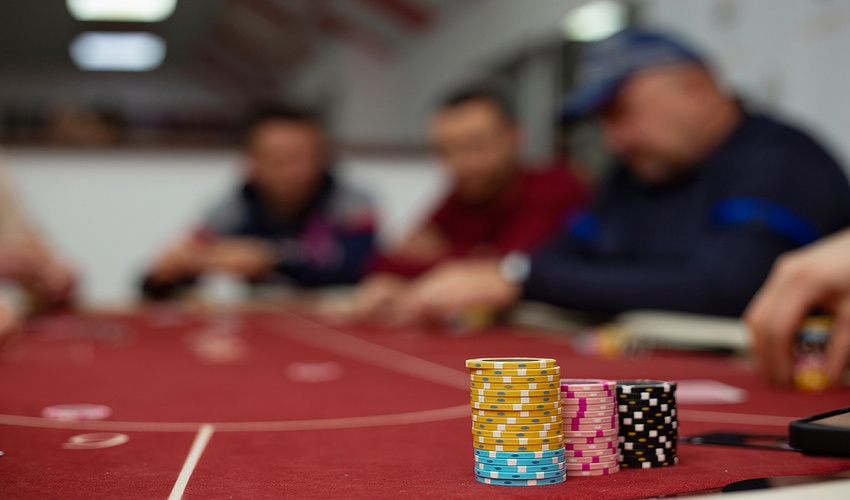
Some good ideas of when it might be a good time to make that bluff.
Pre Flop
When you are in a late position, and it folds to you and the players to your left have been playing fairly tight.
Post Flop
Again, when you are last position but this time it checks to you with an innocent looking board. There is always the chance that someone has just flopped a set and is setting a trap out. On the other hand, there is also the possibility that the other players in the hand totally sniffed the flop and are looking for an opportunity to escape the hand.
On A Paired Board
If, on the board, there is a low pair, let’s say 7s or lower, and it has been checked to you on the flop or the turn, then this would be a good time to bluff. It is far more likely that the other two cards of the pair are still in the deck or even in the muck, than in your opponent’s hand. Even more so if they are happy to check on both the flop and the turn.
On The Bubble
If you are playing in a multi table tournament and you are reaching the money bubble, players will normally tend to tighten up to ensure that they get to the cash. This is the optimum time to attempt some bluffs against the short stacks that are in danger of going bust as long as you have them comfortably out stacked.
Bluffs To Be Avoided
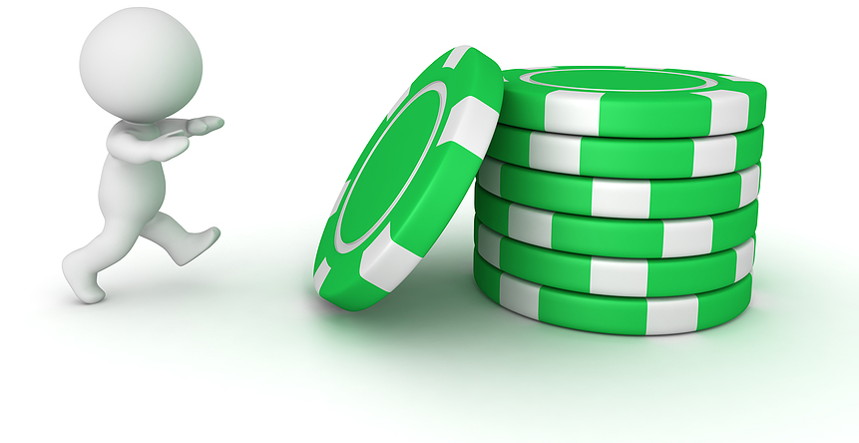
Bluffing is both and valuable and a profitable tactic but as is often the case, there is a time and a place for everything. It is every bit as crucial to understand when you shouldn’t be bluffing and when you should be.
Never Attempt A Bluff From An Early Or Middle Position
It is still too early in the hand and there is a lot of action left to play out while at the same time your aim is to get everyone else to fold.
Do Not Try To Bluff Multiple Players
The odds that at least one player will have connected to the flop are simply just too great. Bluffs have a far higher chance of success in hands when there are only at most two other players.
Don’t Be Frightened To Keep Applying The Pressure In Later Rounds
Never has a bluff worked that checked the river. There’s always the possibility that your rival is also on a draw and continuous pressure could lead to a fold before they get there.
Don’t Bluff When Short Stacked
If you have a short stack, you are not going to frighten anybody, so it really isn’t worth trying to put the fear into them. Generally speaking, a successful bluff will require a series of bets to pull off. Therefore, if you enter into a hand with less than 10 BBs you will not be able to carry on increasing the pressure on your opponent with every round of betting. Bluffing requires a lot of initiative which you won’t have if you don’t have high chip count.
Never Give Up
Don’t get disheartened should your bluff fail, many do and not every attempt at a bluff will be successful. It doesn’t necessarily mean that your bluff was the wrong move, just that it didn’t work out on this occasion.
When Bluffing, Don’t Call
You should only be bluffing when you are betting or raising. If you call, then all you have done is mucked an opportunity to convince your opponent that you are holding a very strong hand. Your opponent is displaying strength but if they happen to be bluffing then a raise could very well win you the pot. If they aren’t bluffing then they have you beaten so that call will only end up costing you chips.
Calling A Bluff
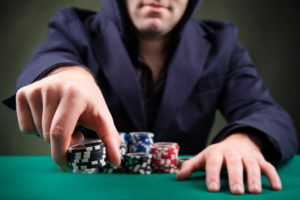 Of course, it is basically impossible to know for sure that an opponent is making a bluff. Making a hero call and calling a bet that you suspect might be a bluff is always going to be a bit of a guessing game. However, that doesn’t mean your guess has to be an uneducated one.
Of course, it is basically impossible to know for sure that an opponent is making a bluff. Making a hero call and calling a bet that you suspect might be a bluff is always going to be a bit of a guessing game. However, that doesn’t mean your guess has to be an uneducated one.
This is where tells can come in handy. Most poker experts will tell you that there are plenty of physical tells, signs and body language clues that you can look out for when playing live poker that can expose a bluff.
This is because a bluff is at base level a nothing more than a lie and humans often have involuntary yet different physical responses when committing to a lie. A player who places a bet and then immediately reaches for a drink or starts playing with their chips more than they would usually do could be giving off information that they are bluffing. Some believe it is a sign of a bluff if a player merely starts looking down at their stack.
However, most professional poker players are only too aware of these tells and have been known to flip the narrative, sending out reverse tells or false signals in an attempt to trick somebody into thinking that they are bluffing and in a weak position when actually the opposite is the case.
Your best bet is to simply get as good a read as possible on your opponent as you can throughout the game. Has your opponent been playing a lot of hands, how is the chip stack in comparison to the tourney average and other questions you could ask yourself that might give you an idea of what type of player you are up against.
Conclusion
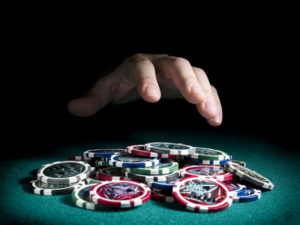 When you are bluffing, you are attempting to convince your opponent that the hand you are holding is either better or worse than you are pretending it is. This is either because you believe the cards you have are not good enough to win or you are trying to draw more of your rival’s money into the pot. Either way mastering deception is vital to becoming a winning poker player.
When you are bluffing, you are attempting to convince your opponent that the hand you are holding is either better or worse than you are pretending it is. This is either because you believe the cards you have are not good enough to win or you are trying to draw more of your rival’s money into the pot. Either way mastering deception is vital to becoming a winning poker player.
It can be one of the worst feelings in poker when a bluff goes wrong, but that is part of the game, and the sad truth is if that if it’s not happening to you then you are probably not bluffing enough. Conversely, executing a successful bluff, or calling an opponent’s, can also be one of the best feelings in the game.
In conclusion, don’t be afraid to bluff.
